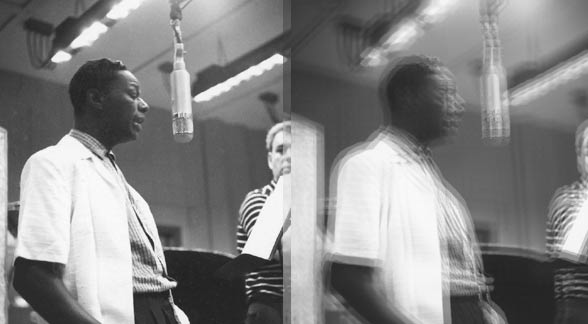Making Copies: Digital Perfection? Part II
It’s not hard to grasp the concept of a digital representation of a physical part, image or music selection if you can get your head around the idea of the ones and zeros storing the instructions for recreating that part, image or sound. The move from analog manufacturing and media to digital representations started a long time ago and has come to dominate our lives. Computer Aided Design and Computer Aided Manufacturing (or CAD/CAM) for short is the way of the world. Designers of salt shakers or aircraft parts are using computer screens not paper to envision and refine their designs. The shop floor is no longer populated by skilled machinists and milling machines operators. Instead you’ll find flat panels that display the control interfaces that empower a computer controlled machine to do the work.
Since the first PCM digital recorder/reproducers appeared back in the 70s, music moved in a similar direction. Once an analog signal could be represented by a numerical set and stored in some sort of digital memory (optical discs, hard drives, USB sticks…even punched cards!), the paradigm changed and audio engineers learned an entirely new way of handling their jobs.
I can remember my first experiences with a digital audio workstation. It was a Sound Tools (a predecessor to Pro Tools) system designed by Digidesign. For the first time, the audio was shown on a small computer screen whereas before we had to imagine the sound that existed as a series of magnetic domains on a piece or brown tape. Editing was a process of dragging a mouse, hitting delete and waiting for the computer to rearrange the binary information that was on the hard drive before redrawing the resultant waveform on the screen. The computer application would actually “erase” the source data that you had loaded from a DAT tape or other source in a destructive way so you had to be sure you knew what you were doing.
Digital audio went through a series of specification changes as the hardware, markets and software evolved. Apple MacIntosh computers included an 8-bit/22.050 kHz sound chip in their machines. PCs required you to purchase a Creative Labs Sound Blaster add-in card with the same specs. Those of use that needed to work on professional CD premastering required hardware and software that operated at 48/44.1 kHz and 16 bits. My Sound Tools system managed that and the Sonic Solutions System that I purchased very shortly after I got my Sound Tools system did as well.
The next generation sound cards moved the standard to 48/24 and all of the PC users had to purchase new 16-bit Sound Blaster hardware. This was followed by 24 bit cards and today the standard includes 96/192 kHz 24-bit sound capabilities. The chip makers don’t even produce sound cards anymore…these high definition standards are built into the motherboards. You new MacBook and tablet have better sound capabilities than the large tower that I had when I started the Pacific Coast Sound Works!
The specifications for digital audio moved higher and higher just at the screen resolution, aspect ratio and screen size moved higher in computer displays. The technology followed Moore’s law and has given us the digital lifestyle that we enjoy today.
At some point the resolution of images, video and audio reaches a point where it meets or exceeds the capability of our human senses. There is no hard line that exists in some meta standards book that emphatically establishes when a particular specification eclipses our ability to distinguish any changes. However, I think just about everyone has experienced the increase in digital video and imagery.
I’m staying in a hotel in SF right now that still has standard definition TVs that are NOT flat panels. It’s virtually impossible to watch television with this equipment any longer.
Sound is the same way for me. I’ve been listening to 96 kHz/24-bit unmastered recording in full 5.1 surround for over 10 years and have a very hard time listening to anything else. Certainly, I enjoy the music from the past but the sound pales in comparison to what can be done today.
Yesterday, I visited the SONY room and listened to selections from Santana and Nat King Cole that were transfers of the analog tapes using DSD 64. They were pleasant enough…in fact the 50s recording of Nat King Cole sounded spectacular. I was less impressed with the Santana, but that was not the result of the DSD. It was the choices made by the engineers back in the 70s that recorded that track.
The demands of the commercial music industry are different from the expectations of music loving audiophiles.


The last sentence…… I could think of several interpretations, but I am not sure which one you meant, Mark?